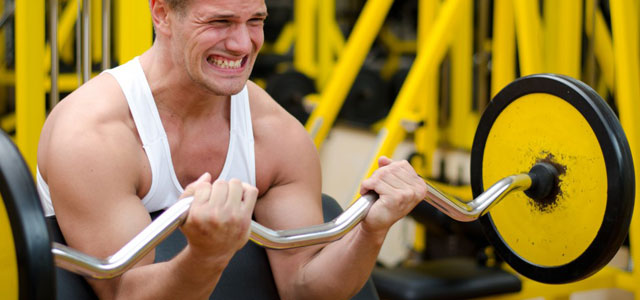 Stars and athletes have been using it for years as a way to get in shape.
Stars and athletes have been using it for years as a way to get in shape.
For the better part of 20 years, Philip Alexander, MD, was a dedicated runner. By some measures he was a fanatic. The Texas native pounded out an average of 60 miles a week. And if that weren’t obsessive enough, he would add another 35 miles riding his bicycle. “I was nuts,” says Alexander, 57, an internist who practices medicine in College Station, Texas. “I would do 50 full runs up and down the football stands. Every joint hurt. The next day I felt like I had been run over by a truck.”
The worst part about it, Alexander says, is that his grueling workout not only left him feeling physically beat but he also wasn’t seeing any improvement in his cardiac results. His “good” cholesterol — the HDL– wouldn’t move above a 42 reading. “I didn’t know how to get a more cardiovascular workout,” he says. “I knew what I was doing wasn’t working, and it was tearing my body apart.”
Then five years ago, Alexander came across a new workout called super-slow weightlifting. It was developed by Ken Hutchins, who happened to grow up in the same small Texas town as Alexander. So the physician called the trainer. It was the beginning of a beautiful and healthy relationship.
Slow Movements, Quick Results
Alexander still occasionally runs with his dog. But the days of 20-mile runs are long gone. He gets all the cardiovascular and strength training he needs with a couple of super-slow sessions each week. “I have yet to see a downside in it,” says Alexander, who has seen his HDL shoot up to 62. “The thing that hooks everybody by the neck are the results.” Hutchins developed the super-slow method in 1982. He was working with a group of elderly women who were part of an osteoporosis study being conducted at the University of Florida. As Hutchins describes it, the women were delicate and he was worried about someone getting hurt. The protocol he was using had the women lifting their weights in two seconds and lowering them in four seconds. But their unsteady and erratic form concerned the trainer. “Rather than get someone hurt I went back to the drawing board,” says Hutchins, who holds four American patents on exercise equipment design.
Off the drawing board came the first draft of what would eventually become the super-slow workout. Hutchins knew from experience that there were benefits to the slow, methodical lifting and lowering of weights. But the common belief was that slow lifting could only be applied to rotary movements. That meant it couldn’t be used for things like leg or chest presses or pull-downs. Hutchins circumvented that problem by designing a turn-around technique. Instead of stopping just before the movement got easy, he kept going and slowly changed the direction. “The women got incredible results,” he says. “Super-slow developed into full blossom from that one study.”
Slower Is Safer
Today, super-slow’s popularity is growing. Celebrities like actor Brad Pitt use the technique as a way to build muscle quickly. Super-slow can build 50% more muscle in 10 weeks than regular weightlifting. The idea of super-slow is to bring the muscles to exhaustion by keeping them bear weight — keeping them loaded, in weight-room parlance — throughout the movement.
“The basis of our belief is the in-road theory,” Hutchins says. “Basically we train your muscles by putting a weight load on them so that the muscle goes from the fresh strength that you start with to where, after several reps, it is reduced to the point where you can’t move the [weight]. Somewhere on the in-roading process the muscle gets progressively more fatigued and we cross a … threshold, which turns on a signal to the body to produce greater strength and to grow muscle.” When done properly, in-roading occurs when the muscles fail, usually within two or three minutes if done properly. “It’s performed slower to be harder,” Hutchins says. The super-slow method targets the body’s major muscles, called skeletal muscles. Hutchins says the skeletal muscles are the body’s engine. They produce more heat, consume more calories, and receive more blood flow than any of the body’s other muscles.
Until now, skeletal muscles have largely been ignored. And to top it off , the benefits of weightlifting in general have taken a back seat to such activities as running and aerobics. A super-slow workout offers a variety of rewards, according to Hutchins. For one, slower is safer. Most weightlifting injuries are the result of poor form and jerky, erratic movements. Also, the slower you go, the more time the muscles are carrying the weight load. Moving fast can cause momentum to take over and reduce the weight load.
How to Do It
Before you start a super-slow workout, Hutchins says it’s important to determine how much weight you can lift and then reduce it by 30%. “If you’re a novice and we knew the weight that was perfect for your strength it wouldn’t be good to go that high,” he says. “You need to master the technique.”
Concentration on form is important with super-slow.
-
Find a quiet place where you can work uninterrupted for 20-30 minutes.
-
Start with six to 10 repetitions of each exercise, taking 10 seconds to lift the weight and another 10 seconds to lower it.
-
Take as little time as possible in between exercises.
Remember, Hutchins says, the objective of super-slow exercise is to make the muscles fail. “Move briskly but safely between exercises,” he says.
A good workout for beginners should include five to six exercises.
-
Begin with the lower body. Do a calf raise, squat, or leg press.
-
Follow that with a chin-up or pull-down. Next, do pushups or a chest press.
-
Finish the workout with a static neck exercise.
“Do nothing that is sudden or jerky,” Hutchins says. “We generally want to stick to compound movements that involve more than one joint, like a row, chest press, or squat. They work more muscle mass at one time and are easier to judge in terms of form.” As with any weightlifting exercise, Hutchins says, take at least a day off in between workouts. “The muscle building goes on when the body is resting,” he says. “If you work out while it is trying to build muscle, you prevent it.”




